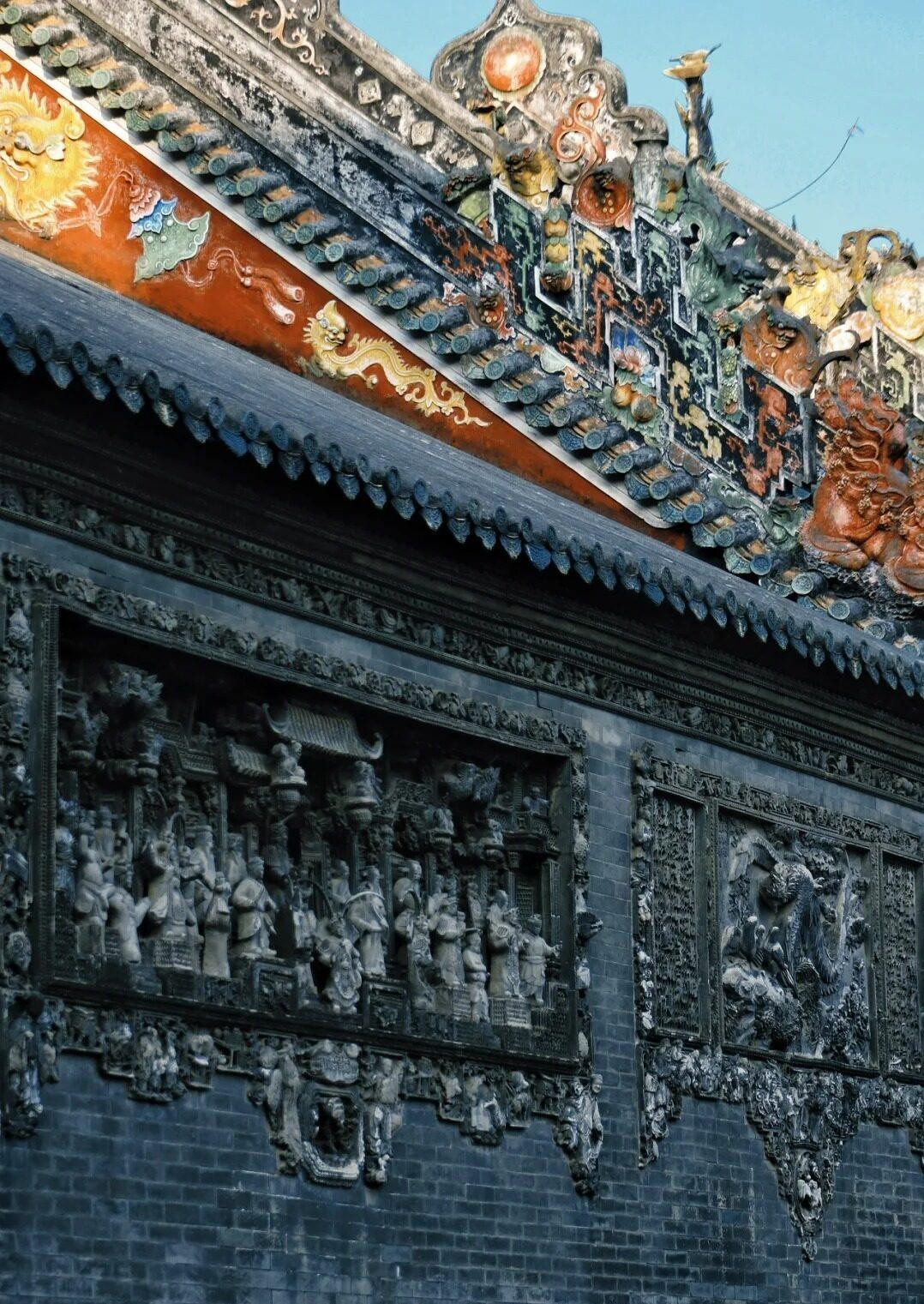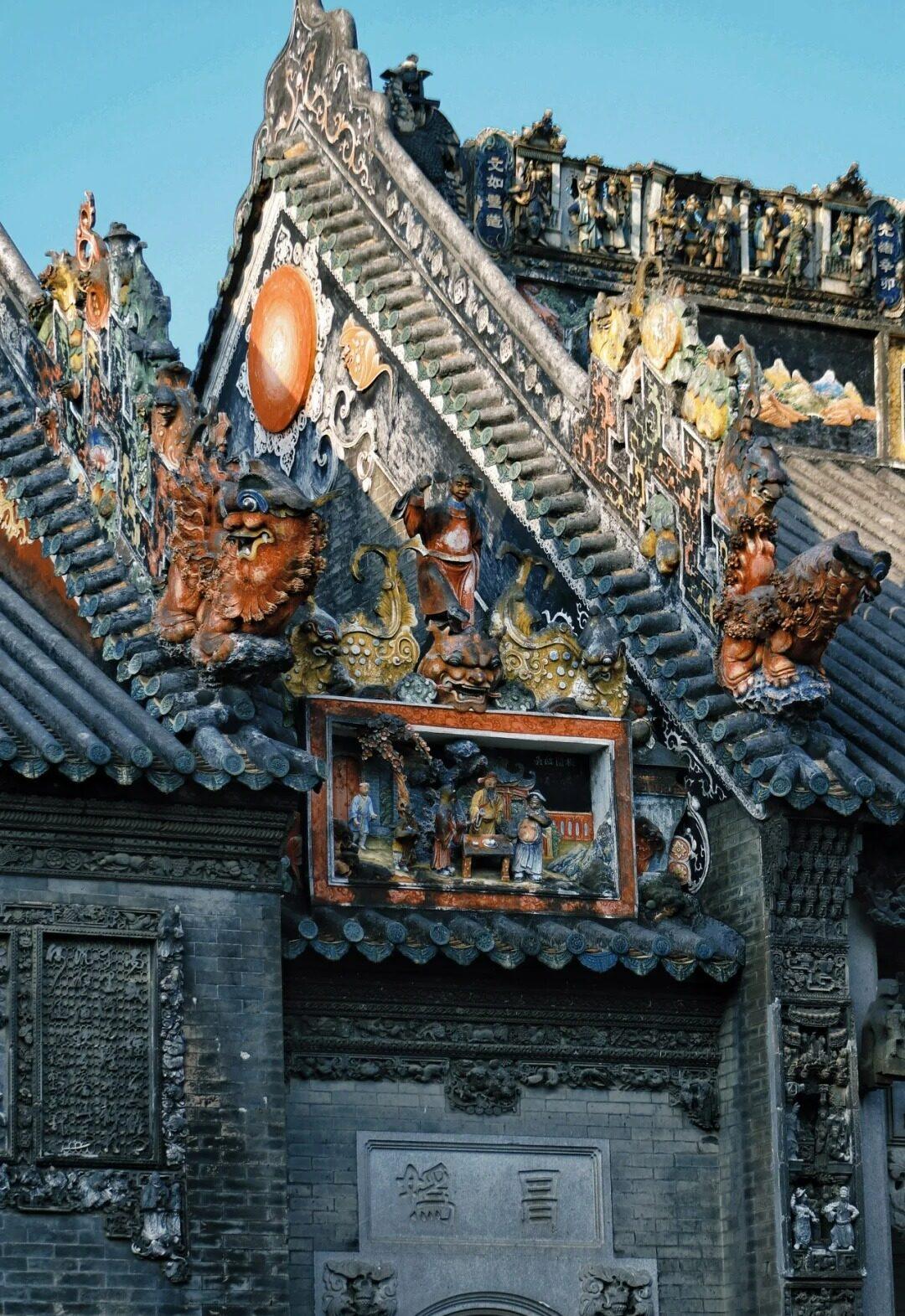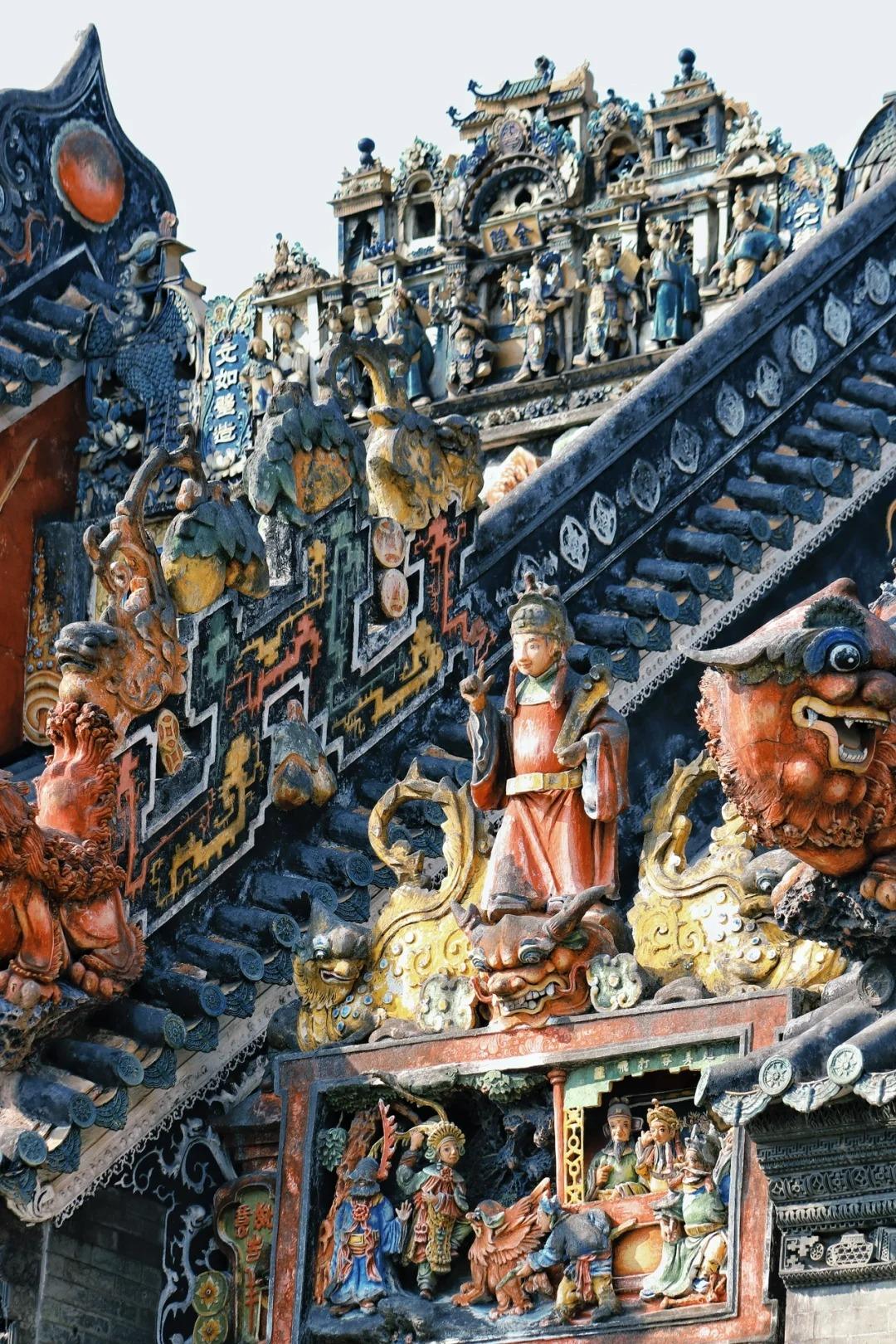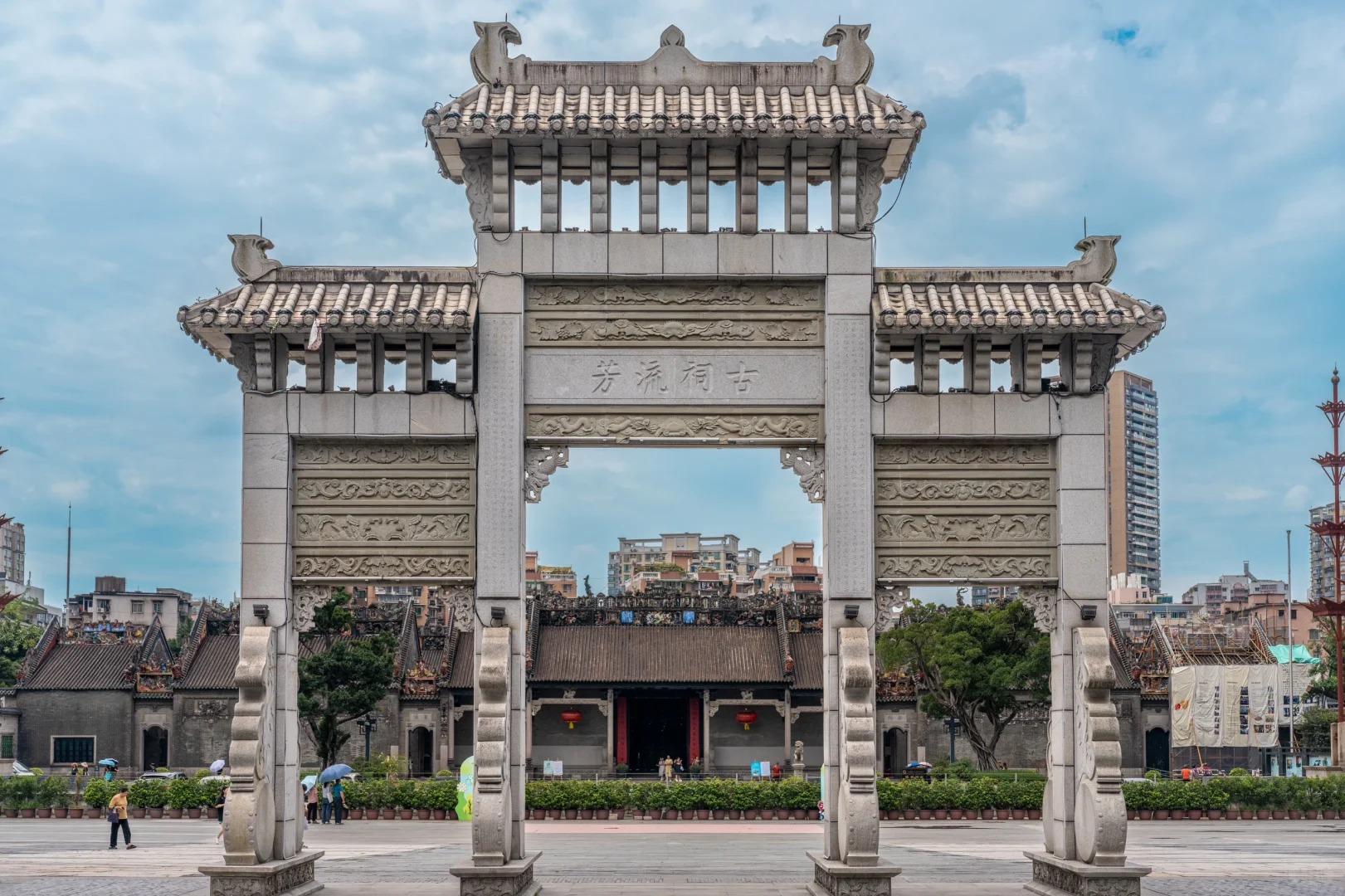Visiting Information
| Information | Details |
|---|---|
| Chinese Name | 陈家祠 (Chén Jiā Cí) |
| Location and Address | No. 34 Enlong Lane, Zhongshan 7th Road, Liwan District, Guangzhou, Guangdong Province, China |
| Opening Time/Hours | 8:30 AM – 5:30 PM daily |
| Entrance Fee | Adults: 10 CNY Children (under 1.2m): Free |
| How to Get There | By Metro: Line 1 to Chen Clan Academy Station, Exit D By Bus: Take bus 5, 10, 58, 89, 130, or 273 to Chen Clan Academy Station By Taxi: Easily accessible from anywhere in Guangzhou |
| Best Time for Visit | Spring (March to May) or Autumn (September to November) for comfortable weather |
| Contact Info | Phone: +86 20 8181 4559 Email: [email protected] |
Overview
Chen Clan Ancestral Hall, also known as Chen Clan Academy, is a historical landmark and museum in Guangzhou, China. Built in the late 19th century, it serves as a prime example of traditional Lingnan architecture and houses a vast collection of southern Chinese art and craft. The complex is renowned for its intricate decorations, detailed carvings, and cultural significance.
Historical Background
Chen Clan Ancestral Hall was constructed between 1890 and 1894 during the Qing Dynasty. It was funded by the Chen clan, a prominent family in Guangdong, as a place for clan members to study and prepare for imperial examinations. The hall also served as a place of ancestral worship and clan gatherings. After the fall of the Qing Dynasty, it was used as a school and later converted into a museum showcasing Guangdong folk art and crafts.

Architectural Features
- Layout: The complex follows a traditional Chinese symmetrical layout, consisting of 19 buildings with 9 halls and 6 courtyards. The main axis runs from south to north, with buildings arranged on both sides, embodying the principles of feng shui.
- Roof Decorations: The roofs are adorned with intricate ceramic sculptures known as “ridge beasts.” These colorful figurines depict scenes from Chinese mythology and literature, serving both decorative and symbolic purposes to ward off evil spirits and bring good fortune.
- Wood Carvings: The hall is famous for its exquisite wood carvings, which can be found on beams, pillars, and window frames. These carvings depict scenes from Chinese history, folklore, and daily life, showcasing the exceptional craftsmanship of Guangdong artisans.
- Stone Carvings: Stone carvings are another prominent feature, particularly in the courtyard areas. These include ornate pillars, staircases, and decorative panels, often featuring auspicious symbols and natural motifs.
- Guangdong Decorative Arts: The hall incorporates various Guangdong decorative arts, including lime sculptures, brick carvings, and colorful pottery. These elements reflect the rich artistic traditions of the Lingnan region.
Cultural Importance
Chen Clan Ancestral Hall holds significant cultural importance as a symbol of Cantonese heritage and craftsmanship. It represents the social and educational systems of late imperial China, particularly the importance of clan associations and preparation for imperial examinations. Today, it serves as a museum of folk art, preserving and showcasing the rich artistic traditions of the Lingnan region. The hall’s architecture and decorations provide invaluable insights into the beliefs, values, and aesthetic preferences of 19th-century Guangdong society.
Surrounding Attractions
- Liwan Lake Park: A short walk from Chen Clan Ancestral Hall, this park offers a tranquil setting with traditional Chinese gardens, lakes, and pavilions. It’s an ideal spot for relaxation and experiencing local life.
- Shangxiajiu Pedestrian Street: This bustling shopping street is known for its blend of traditional architecture and modern retail. Visitors can explore local shops, try Cantonese cuisine, and experience the vibrant atmosphere of Guangzhou.
- Guangxiao Temple: One of the oldest Buddhist temples in Guangzhou, Guangxiao Temple offers a glimpse into the city’s religious history. Its peaceful grounds and ancient architecture provide a stark contrast to the bustling city outside.
- Xiguan Houses: The nearby Xiguan area features well-preserved traditional Cantonese houses, known for their unique architectural style. These houses offer insight into the daily life of wealthy Guangzhou residents in the past.

Photography Opportunities
- Exterior Facades: The ornate exterior of Chen Clan Ancestral Hall, with its detailed carvings and colorful roof decorations, offers excellent opportunities for architectural photography, especially during golden hour.
- Courtyard Scenes: The multiple courtyards within the complex provide picturesque settings for photography, with traditional Chinese landscaping elements and architectural details creating interesting compositions.
- Detailed Craftsmanship: Close-up shots of the intricate wood and stone carvings, as well as other decorative elements, can capture the exceptional skill of the artisans who created them.
- Exhibition Halls: The various exhibition halls displaying Guangdong folk art offer opportunities to photograph traditional crafts, paintings, and artifacts in an authentic setting.
- Seasonal Changes: The hall’s appearance changes with the seasons, offering different photographic opportunities throughout the year, from spring blossoms to autumn foliage in the courtyards.
Modern Importance
- Cultural Preservation: Chen Clan Ancestral Hall plays a crucial role in preserving and promoting traditional Cantonese culture and craftsmanship. It serves as a living museum, allowing visitors to experience the rich cultural heritage of Guangdong.
- Educational Resource: The hall functions as an important educational resource for both local students and international visitors, offering insights into Chinese history, architecture, and art.
- Tourism Landmark: As one of Guangzhou’s most prominent historical sites, the hall contributes significantly to the city’s tourism industry, attracting visitors from around the world and boosting the local economy.
- Artistic Inspiration: The hall continues to inspire contemporary artists and designers, influencing modern interpretations of traditional Chinese aesthetics and craftsmanship.
- Community Pride: For the local community, Chen Clan Ancestral Hall remains a source of pride and identity, representing the rich cultural legacy of Guangzhou and the Lingnan region.

FAQ
- What is Chen Clan Ancestral Hall famous for?
Chen Clan Ancestral Hall is famous for its exquisite Lingnan architecture, intricate wood and stone carvings, and its role as a museum showcasing Guangdong folk art and crafts. - What’s inside Chen Clan Ancestral Hall?
Inside Chen Clan Ancestral Hall, you’ll find multiple halls and courtyards featuring traditional architecture, exhibitions of Guangdong folk art, including wood carvings, pottery, and embroidery, and cultural relics from the late Qing Dynasty. - Is Chen Clan Ancestral Hall free?
No, Chen Clan Ancestral Hall is not free. There is an entrance fee of 10 CNY for adults, while children under 1.2m tall can enter for free. - Is Chen Clan Ancestral Hall worth visiting?
Yes, Chen Clan Ancestral Hall is worth visiting for its stunning architecture, rich history, and impressive collection of Guangdong folk art. It offers a unique glimpse into traditional Cantonese culture and craftsmanship. - What to do in Chen Clan Ancestral Hall?
In Chen Clan Ancestral Hall, you can explore the traditional architecture, admire the intricate carvings and decorations, visit the folk art exhibitions, learn about Cantonese history and culture, and take photographs of the beautiful courtyards and halls. - How do I get to Chen Clan Ancestral Hall in the local city?
In Guangzhou, you can reach Chen Clan Ancestral Hall by taking Metro Line 1 to Chen Clan Academy Station and using Exit D. It’s also accessible by several bus routes or taxi. - How to visit Chen Clan Ancestral Hall?
To visit Chen Clan Ancestral Hall, purchase a ticket at the entrance. It’s open daily from 8:30 AM to 5:30 PM. Allow about 1-2 hours for your visit, and consider hiring a guide or using an audio guide to fully appreciate the site’s history and cultural significance.






